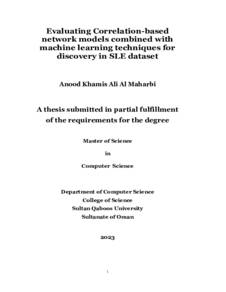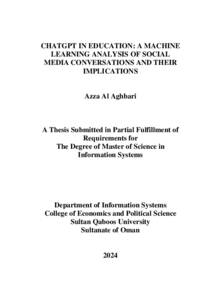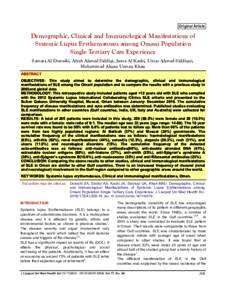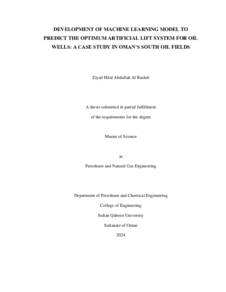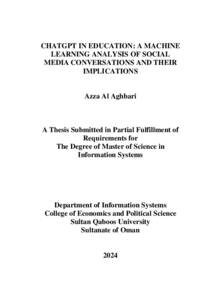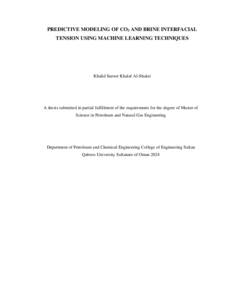وثيقة
Evaluating Correlation-based network models combined with machine learning techniques for discovery in SLE dataset.
المصدر
Master's thesis
الدولة
Oman
مكان النشر
Muscat
الناشر
Sultan Qaboos University
ميلادي
2023
اللغة
الأنجليزية
نوع الرسالة الجامعية
Master's thesis
الملخص الإنجليزي
Systemic lupus erythematosus (SLE) is an autoimmune disease that
results in widespread inflammation and tissue damage across various
organs, such as the joints, skin, brain, lungs, kidneys, and blood vessels.
Though there is no known cure for lupus, medical interventions and
lifestyle changes can help manage the disease. In recent years, the
availability of data and electronic medical records of patients has provided
unprecedented opportunities to detect correlations in certain disease
states, such as high blood pressure that may lead to heart disease. This data
and medical records can be utilized to generate new research hypotheses
for future studies. The objective of our study is to facilitate early SLE
diagnosis and reduce the associated time, cost, and effort by building a
Correlation Networks Model (CNM) that can assist physicians in
diagnosing whether a patient is suffering from SLE or not. We will be
applying the model to a local dataset of 1155 patients, collected from the
Rheumatology clinic at SQUH (Sultan Qaboos University Hospital)
between 2006 and 2020. The dataset comprises information on patient
demographics, clinical history and laboratory tests.
Aims:
(a) to identify severity clusters in Omani patients diagnosed with
Systemic Lupus Erythematosus, (b) to detect features that are associated
with disease severity, and (c) to investigate the correlation between
patients classified as Lupus patients in Oman.
Methods:
Our approach involves gathering a wide range of data (SQUH),
including demographic, clinical, and laboratory data. Once collected, the
data undergoes several stages, starting with data cleaning and feature
extraction. We then perform data analysis to identify the data types and
examine the data distribution to gain a comprehensive view and
understanding of the dataset. Two clustering methods, Markov Cluster
Algorithm and K-means clustering, are employed to cluster the dataset.
Finally, we evaluate the clustering results using a correlation model.
Results:
The exploratory data analysis shows that females constitute 88% of SLE
patients, while males account for 12%. The regions of Muscat and Al
Batinah have the highest number of SLE patients, with Muscat having 31%
and Al Batinah having 24%. On the other hand, the regions of Al Wasta and
Musandam have the lowest distribution of SLE patients.
The clustering analysis results showed patients clusters, mild, and
severe clusters. Patients in the severe cluster have a higher prevalence of
the Anti-dsDNA, Rheumatoid Arthritis and Thyroid stimulating hormone
(TSH).
قالب العنصر
الرسائل والأطروحات الجامعية

